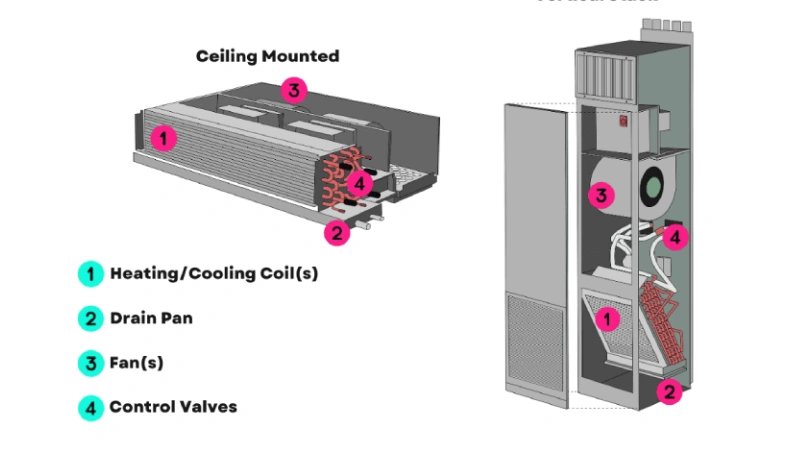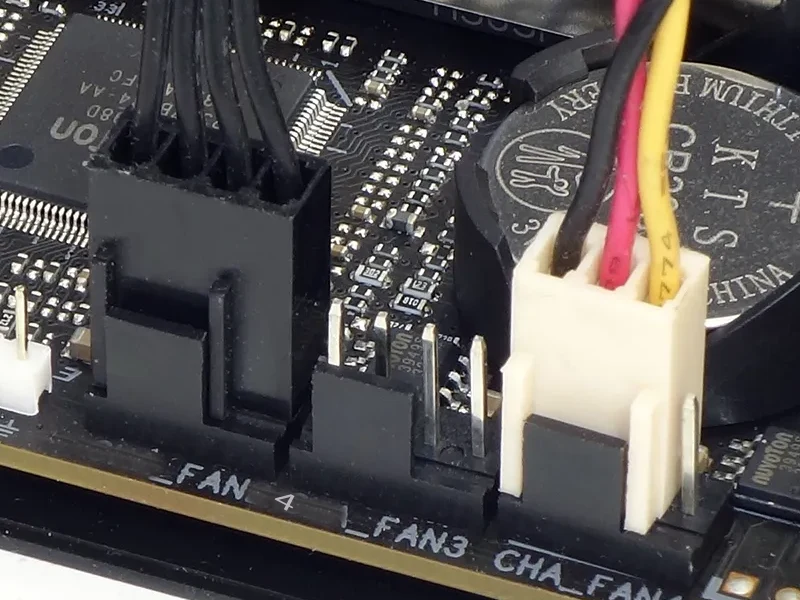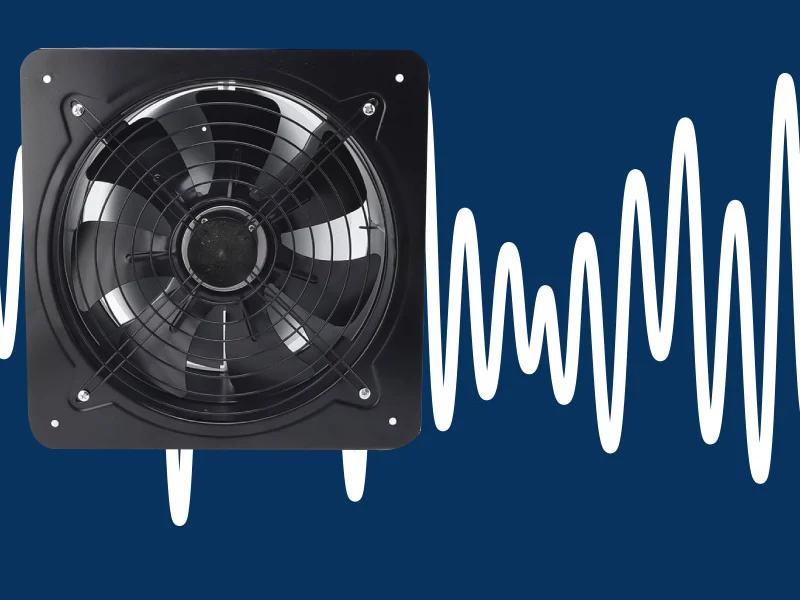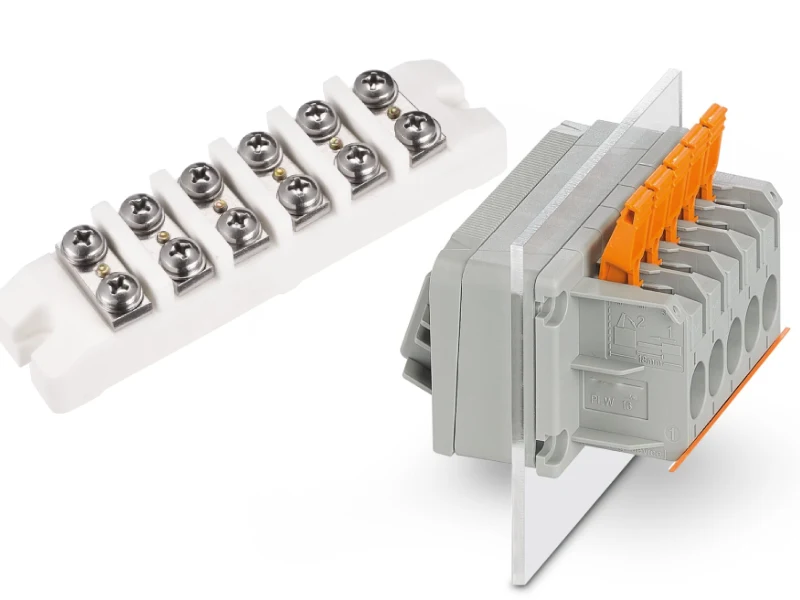You might wonder what does the fan do on ac. The answer is simple: it moves air around your room, helping you feel cooler and more comfortable. What does the fan do on ac besides cooling? It improves air circulation, so fresh air reaches every corner. What does the fan do on ac for your energy bill? It lets you raise the thermostat without losing comfort, cutting power use by up to 70%.
What does the fan do on ac for your equipment? It helps your system last longer and work better. What does the fan do on ac with Linkwell’s products? These smart solutions keep your space comfortable and your gear safe.
Key Takeaways
- The AC fan circulates air, improving comfort and preventing stuffiness in your space.
- Using fan mode can save you up to 60% on energy costs, making it a smart choice for mild weather.
- Regular use of fan mode helps extend the lifespan of your air conditioning system by reducing strain on the compressor.
AC Fan Function and Operation

What Does the Fan Do on AC
When you turn on your ac unit, the fan gets to work right away. The main fan function is to move air across the system’s coils. This helps with both cooling and air circulation. Inside your air conditioner, the indoor blower fan pulls warm air from your room and pushes it over the evaporator coil. The coil cools the air, and then the ac fan sends that chilled air back into your space. At the same time, the outdoor condenser fan releases the heat collected from inside your home.
Here’s what happens step by step:
- The ac fan inside the unit draws in warm air from your room.
- The air passes over the evaporator coil, where the cooling mechanism kicks in.
- The ac fan pushes the cooled air back into your room, spreading comfort everywhere.
- The outdoor fan helps the ac unit get rid of the heat it collected, keeping the system running smoothly.
Linkwell’s Cabinet Air Conditioner and Computer Chassis Fan use advanced airflow designs. These fans keep air moving efficiently, which is key for cooling and for protecting sensitive electronics from overheating. You get steady, reliable performance even in tough environments.
AC Fan in Cooling Mode
When you set your ac unit to cooling mode, you activate both the compressor and the fan. The compressor lowers the temperature of the air by removing heat, while the ac fan circulates that cooled air throughout your space. This combination gives you the classic chill you expect from an air conditioner.
Cooling mode uses more energy because the compressor works hard to drop the temperature. The ac fan keeps the air moving, making sure every corner of your room feels the effect. The cooling mechanism relies on both the compressor and the fan working together. If you want fast relief from the heat, cooling mode is your best friend.
You’ll notice that Linkwell’s Cabinet Air Conditioner uses smart controls and efficient fans. These features help the ac unit deliver strong cooling without wasting energy. The optimized airflow design ensures that the cooling reaches every part of the cabinet or enclosure, which is especially important for keeping electronics safe.
Air Conditioner Fan Mode
Air conditioner fan mode works a bit differently. In this setting, the ac fan runs without the compressor. The fan mode function is all about air movement, not temperature change. You get a gentle breeze that helps you feel cooler, even if the air itself isn’t getting colder.
Fan mode uses much less energy than cooling mode. The ac unit simply circulates the existing air, which can help you save on electricity bills. This is perfect for days when you want some airflow but don’t need full-on cooling. The fan mode function also helps prevent stuffiness and keeps the air fresh.
Linkwell’s Computer Chassis Fan shows how important good airflow can be. These fans keep air moving inside computer cases, stopping hot spots and protecting components. The same idea applies to air conditioner fan mode—steady airflow means better comfort and longer equipment life.
Tip: Use air conditioner fan mode when the weather is mild or at night. You’ll stay comfortable and save energy at the same time.
Let’s break down the differences in a simple table:
| Setting | What Runs? | Energy Use | Comfort Level | Best For |
|---|---|---|---|---|
| Cooling Mode | Compressor + Fan | High | Maximum cooling | Hot days, quick relief |
| Fan Mode | Fan only | Low | Gentle airflow | Mild weather, energy saving |
Modern ac units, like those from Linkwell, use smart sensors and programmable settings. These features let you control the fan speed and airflow, so you get the comfort you want without wasting power. The latest fan designs boost airflow efficiency, making your space feel cooler while using less energy.
Benefits of AC Fan Mode
Air Circulation and Comfort
When you switch to ac fan mode, you get more than just a gentle breeze. The fan keeps air moving, which helps prevent stuffiness and keeps every corner of your space feeling fresh. In both homes and industrial settings, ac fan mode can run the blower continuously or only when needed. This means you enjoy continuous air circulation, which spreads warm or cool air evenly and helps reduce hot or cold spots. You’ll notice the air feels cleaner and more comfortable, especially if you use high-quality filters. Linkwell’s Cabinet Air Conditioner and Computer Chassis Fan use advanced airflow designs to make sure air moves efficiently, improving comfort and air quality.
- The fan mode circulates existing air, so it never gets stale.
- It helps keep a pleasant indoor feel without big changes in temperature.
- A steady breeze from the fan can make you feel cooler, even if the AC isn’t cooling.
Energy Savings with AC Fan Mode
Ac fan mode is a smart way to cut down on energy bills. When you use this setting, the compressor stays off, so your system uses much less power. Many people save up to 60% on energy costs by running the fan in AUTO mode. That can mean about $18 a month or $215 a year in savings. Linkwell’s low-power models help you save even more, making them a great choice for homes and businesses.
| Feature | Benefit |
|---|---|
| Low-power consumption models | Reduce electricity costs and support sustainable operations |
Impact on Equipment Lifespan
Using ac fan mode regularly helps your air conditioner last longer. The fan puts less strain on the compressor, which means fewer repairs and a longer life for your system. Linkwell’s advanced fan technology, like thermostat-activated and speed-adjustable fans, cools only when needed and keeps dust out. This reduces wear and tear, so your equipment stays reliable for years.
Tip: Use ac fan mode during mild weather or at night to boost comfort, save energy, and protect your AC investment.
Practical Tips for Using Fan Mode
When to Use Air Conditioner Fan Mode
You might wonder when to activate the fan mode for the best results. The answer depends on your needs and the environment. Here’s a quick table to help you decide:
| Scenario | Description |
|---|---|
| Mild Weather | Use the fan when outdoor temperatures feel comfortable and you want airflow. |
| Evening/Night | Keep air moving at night without extra cooling. |
| Energy Saving | Run the fan to cut power use when you don’t need full cooling. |
| After Cooling | Distribute cooled air evenly after using the AC’s cool mode. |
| Ventilation | Improve air movement in stuffy rooms or workspaces. |
If you use Linkwell’s IP65-rated fans, you get reliable performance even in humid or outdoor settings. This makes strategic fan mode usage easy for both homes and industrial spaces.
Maximizing Comfort and Savings
You can get the most out of your air conditioning system by following a few simple steps:
- Use the fan to spread air evenly and keep indoor temperatures steady.
- Switch to fan mode during mild weather to save energy.
- After cooling, let the fan run to keep your space comfortable.
- At night, use fan mode for quiet, gentle airflow.
- The fan helps lower indoor humidity, making your home healthier.
- Adjust fan settings to match your comfort needs in each room.
Linkwell’s smart monitoring features help you track performance and find the optimal use of fan mode for your space. This approach supports keeping your home comfortable while saving money.
Tip: The fan also helps remove dust, pollen, and odors, improving air quality for everyone.
Common Mistakes to Avoid
Many people make simple mistakes with fan mode. Here are a few to watch out for:
- Leaving the fan on all the time instead of using it only when needed.
- Setting the thermostat too low, which can waste energy.
- Skipping regular maintenance, like cleaning filters or checking for leaks.
- Using fan mode in humid weather, which can raise indoor humidity and cause mold.
- Turning off the AC and opening windows, letting in moisture and pollutants.
| Fan Setting | Effect on Humidity |
|---|---|
| Auto | Lets moisture drain, keeping humidity low. |
| On | Can push moisture back into the room, raising humidity. |
Stay on top of maintenance. Clean your fan and replace filters often. Schedule yearly checkups to keep your system running smoothly. This keeps your air conditioning system efficient and extends its life.
You now know that using fan mode on your AC keeps air fresh, saves energy, and helps your system last longer.
- Fan mode works best on mild days or at night.
- Studies show you can save up to 15% on energy.
Try Linkwell’s Cabinet Air Conditioner or Computer Chassis Fan for reliable airflow.
FAQ
How often should you use the AC fan mode?
You can use fan mode daily, especially during mild weather or at night. It helps keep air fresh and saves energy.
Tip: Try using fan mode after cooling your room for even comfort.
Does running the fan mode help with allergies?
Yes! Fan mode helps circulate air through your AC filter. This can reduce dust, pollen, and allergens in your space.
Can Linkwell fans work in outdoor or humid environments?
Absolutely. Linkwell’s IP65-rated fans handle outdoor and humid conditions. You get reliable airflow and protection for your equipment.




